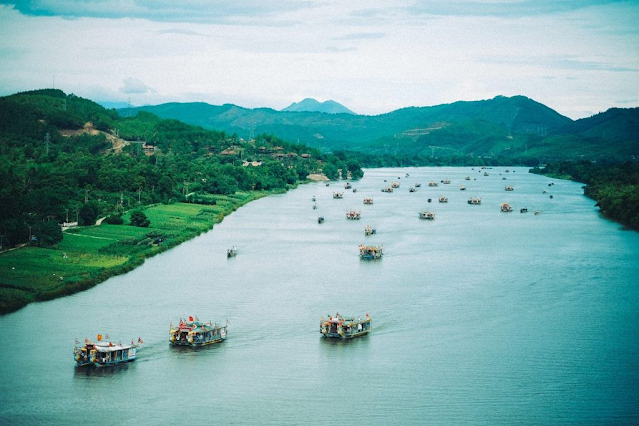As a young boy growing up in Huế, Vietnam, I witnessed firsthand the transformative impact of the French film "Indochine" on my hometown. My family's residence was situated in the Bãi Dâu shipyard, a hive of activity where skilled artisans were crafting the traditional dragon boats that would serve as the cinematic backdrop for the film's river scenes. These vessels, originally designed to evoke the bustling atmosphere of colonial Huế, were later repurposed into floating restaurants, offering visitors a unique culinary experience. While the shipyard itself has since been dismantled, the dragon boats that continue to adorn the Hương River stand as enduring symbols of that era.
The Huong River, with its serene beauty and rich historical significance, played a pivotal role in "Indochine," serving as the setting for many of the film's most iconic scenes. From the opening sequence, where Catherine Deneuve's character embarks on a tranquil boat ride, to the passionate embrace between Deneuve and Vincent Perez, and the poignant final scene, the river's tranquil waters provided a captivating backdrop for the film's dramatic narrative.
Beyond its cinematic significance, the Huong River has long been a central feature of Huế's cultural and historical identity. Its banks are lined with ancient temples, pagodas, and imperial tombs, offering a glimpse into Vietnam's rich past. The river's serene waters have served as a source of inspiration for poets, artists, and musicians for centuries, and its beauty continues to captivate visitors from around the world.
The filming of "Indochine" in Huế brought international attention to the city and its cultural heritage. The film's success helped to revitalize the local tourism industry and preserve the city's traditional way of life. Today, visitors to Huế can still experience the same serene beauty and rich cultural heritage that inspired the filmmakers.










No comments:
Post a Comment